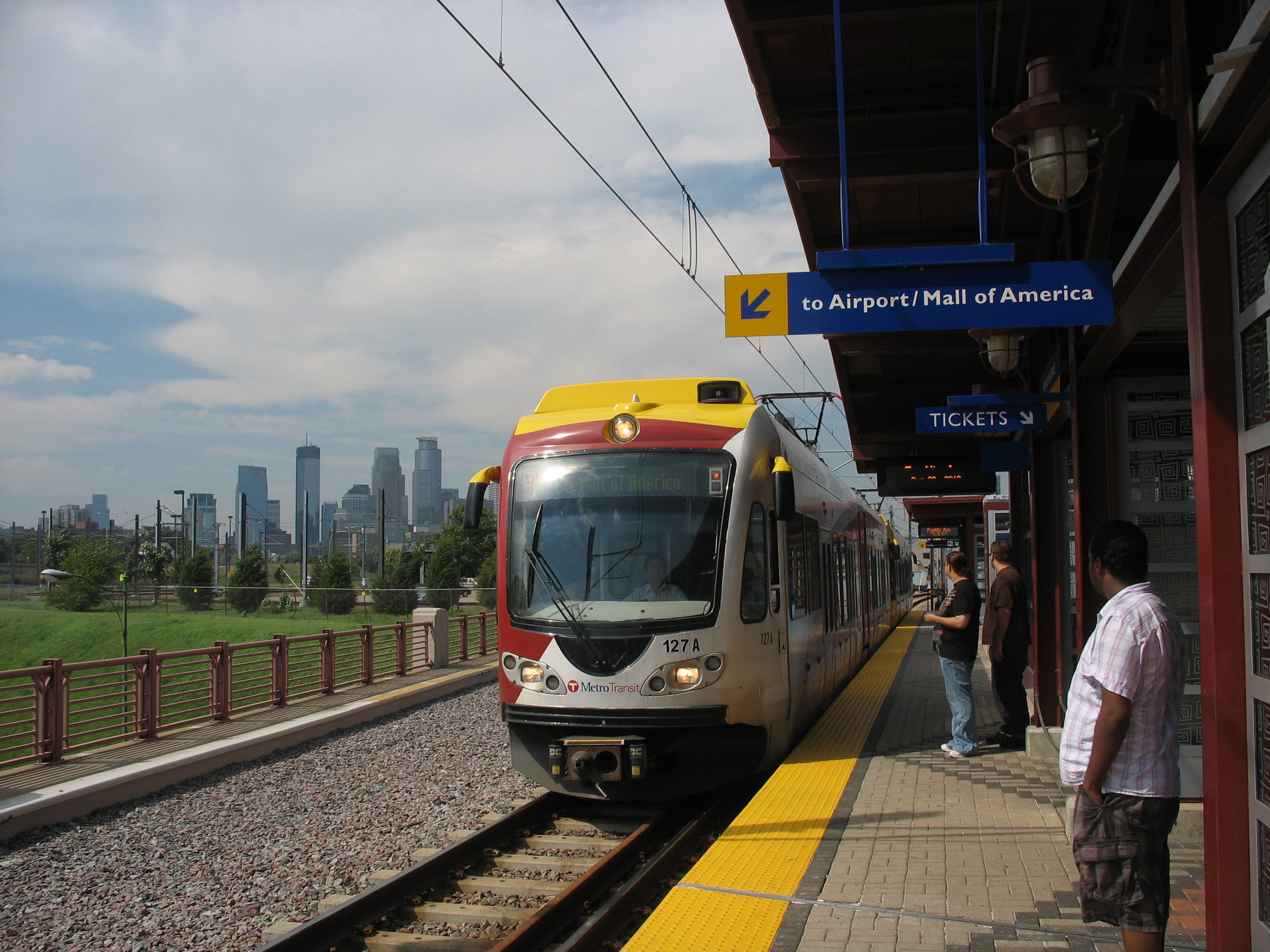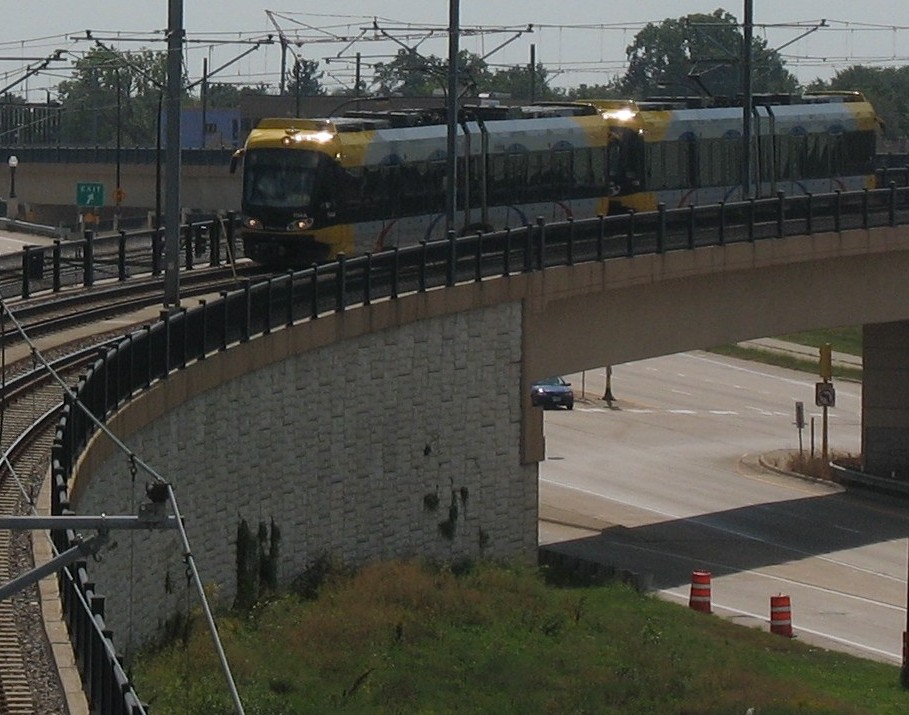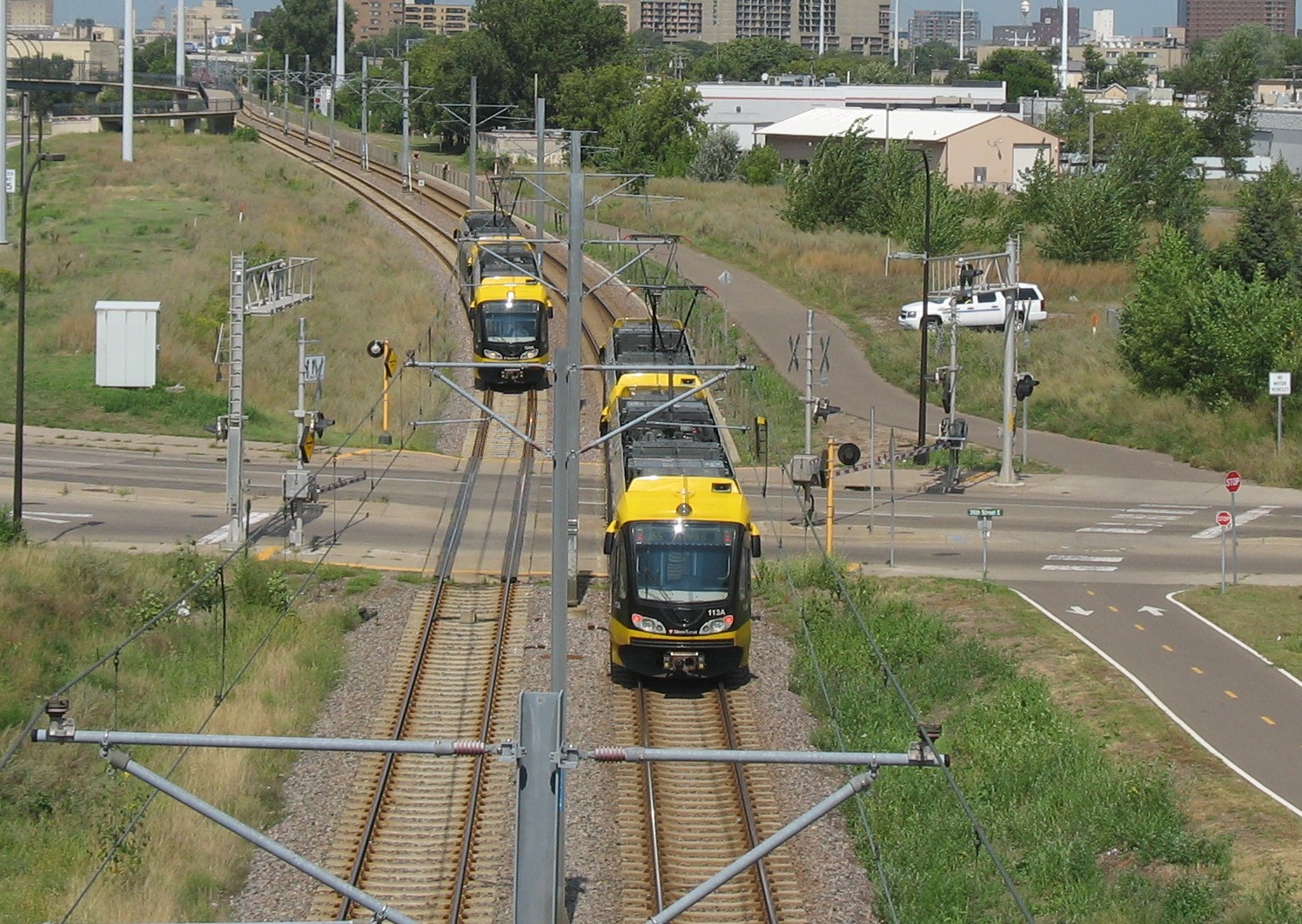When I spent a few days in the twin cities a few years ago, I was excited to ride the city's first light rail line. The Hiawatha (Blue) Line replaced bus 55 in 2004, and even though its alignment outside of downtown is generally not pedestrian friendly, ridership grew so fast that platforms had to be lengthened only five years later to permit longer train sets. That experience established the case for high quality, high capacity transit in the Twin Cities.




Ten years later, Metro Transit is nearing completion of the Central Corridor (Green) Line which will replace overcrowded bus routes. Currently buses 16 (local, all times) and 50 (peak-only limited-stop) carry many thousands of riders between downtown Minneapolis, the University of Minnesota and downtown St Paul, and have no priority aside from a bus lane in downtown Minneapolis.
The Central Corridor LRT project, now about 90% complete, is a good example of how and when transit infrastructure should be built. Too many cities build rail lines on empty corridors hoping for economic development while failing to understand actual transit ridership patterns and improve existing bus routes that people are using now.
As transit becomes more crowded it is important that we address areas of high demand. Trains should not be viewed as magical toys that will attract business, but rather as a tool for increasing capacity. When you have enough ridership, one train set can replace a few buses, which will save you a lot in operating costs. Since we will always have many needs and limited funding, I suggest gradually making capital improvements to speed bus lines all over the city, rather than waiting until you can build a rail line. When ridership is so high that you have major bus bunching, then it's time for light rail or sometimes even heavy rail.
Whenever possible, these things should be done for the entire system. Payment of fares before boarding and bypassing localized traffic congestion are two good places to start. Next year Metro Transit will be operating two high quality lines which should provide examples of ways to improve other lines.


